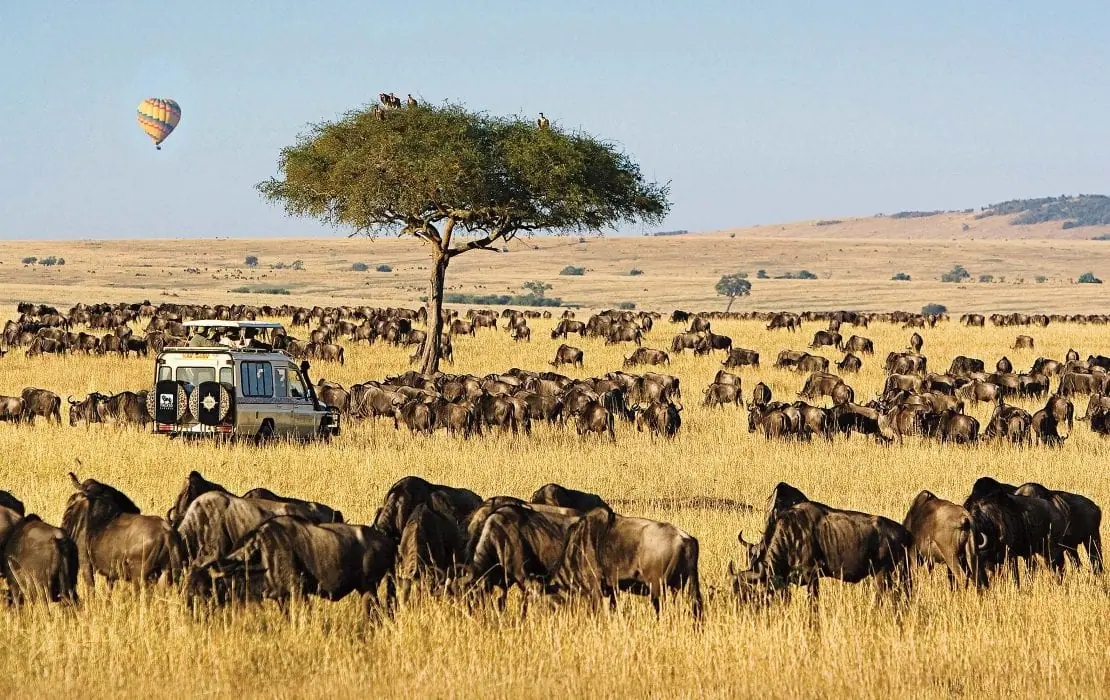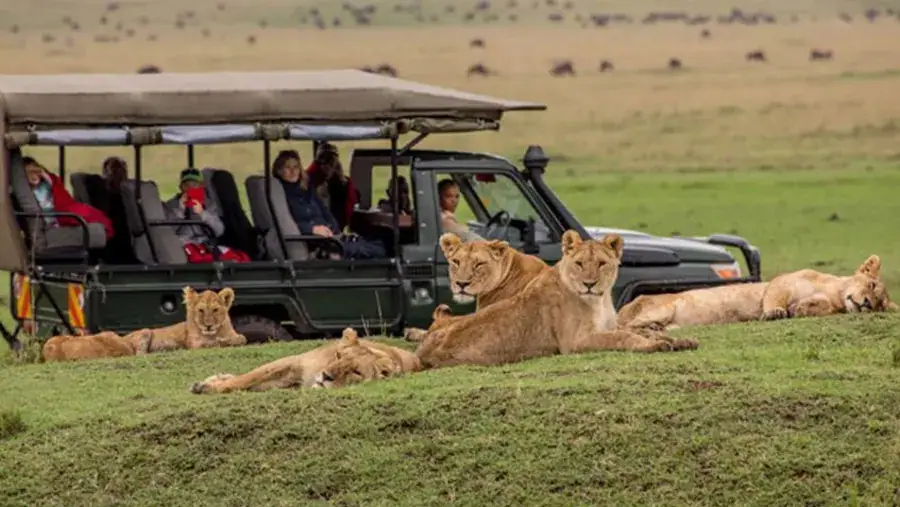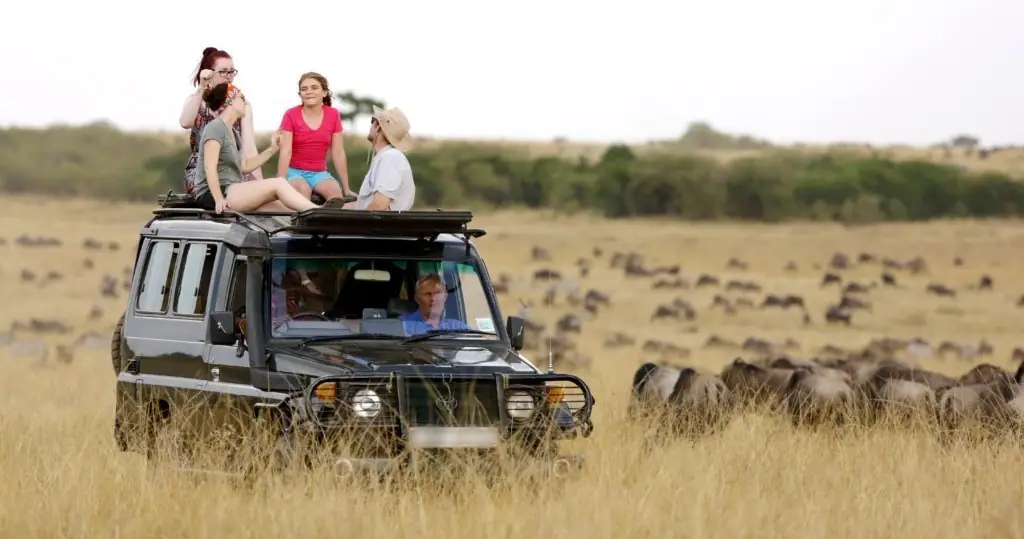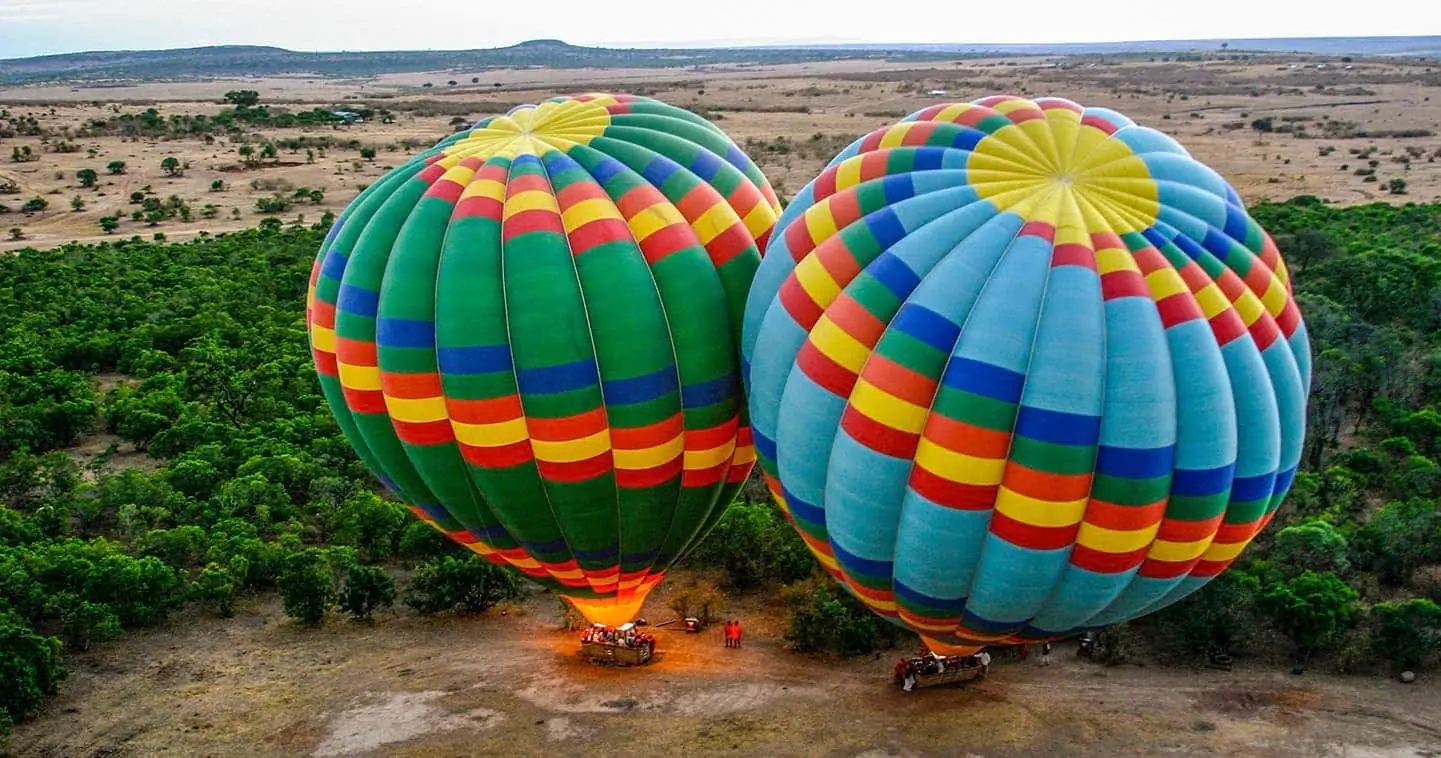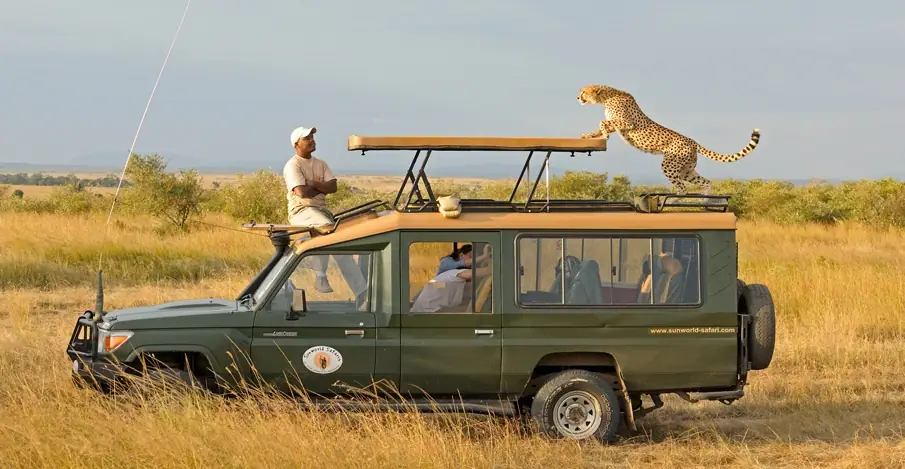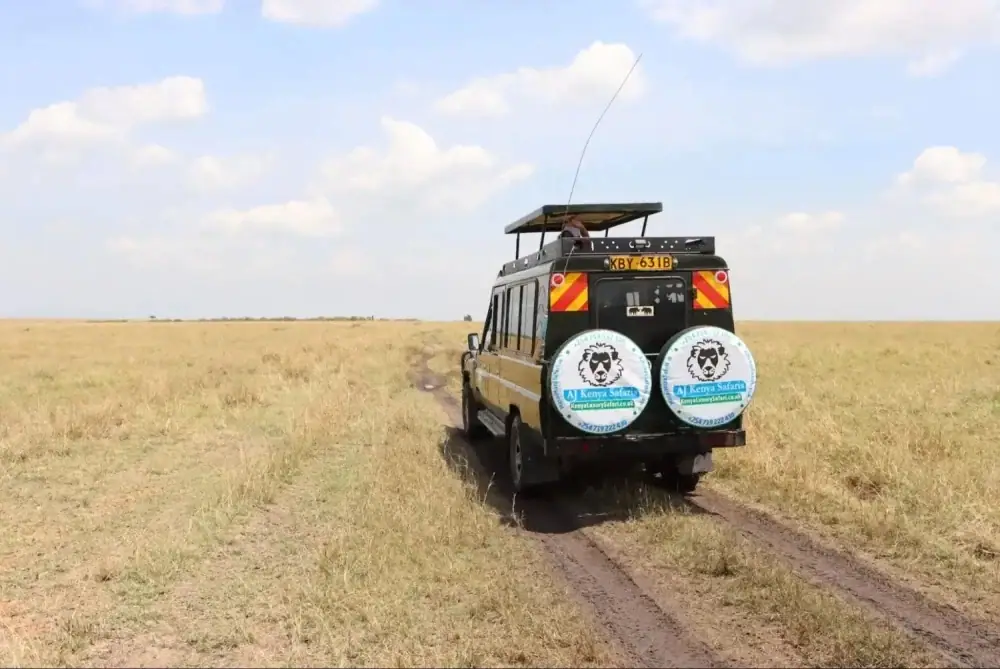Top Masai Mara Animals: A Guide to Wildlife You Can Spot on Safari
Table of Contents
Introduction to Masai Mara Wildlife
The Masai Mara National Reserve, located in southern Kenya near the border of Tanzania, is home to a diverse collection of wild animals.
The African hare, found in the wooded savannas and grasslands of the Masai Mara, is a solitary species that forms small groups for safety when threatened by predators. With over 90 species of mammals and numerous bird species, it’s a haven for wildlife enthusiasts. African wild dogs play a crucial role in the predator-prey dynamics within the Masai Mara ecosystem, particularly as hunters of plains zebras.
The Maasai Mara National Reserve is renowned for its annual migration, where approximately 1.5 million wildebeest, 400,000 zebras, and 200,000 antelopes make their journey across the plains. This natural spectacle is a highlight for any visitor.
The Big Five Animals: African Elephant
In the heart of East Africa, the Maasai Mara is one of the best places to see the Big Five animals: the lion, elephant, leopard, rhino, and buffalo. Among the big cats, the cheetah stands out with its unique physical attributes and remarkable hunting techniques. The reserve is also home to the Big Nine, which includes the Big Five plus giraffes, cheetahs, hippos, and zebras.
The Maasai Mara is home to a wide variety of mammals, including the reticulated or Somali giraffe, mountain zebra, and plains zebra. The aardvark (Orycteropus afer) is a small, nocturnal burrowing animal with a long snout and powerful claws, primarily feeding on ants and termites. Male giraffes eat from the top branches of Acacia trees, while females eat from the bottom branches, showcasing a unique feeding behavior that reduces competition for food.
Mammals of Masai Mara
The Maasai Mara is home to a wide variety of mammals, including the reticulated or Somali giraffe, mountain zebra, and plains zebra. The aardvark (Orycteropus afer) is a small, nocturnal burrowing animal with a long snout and powerful claws, primarily feeding on ants and termites.
The African buffalo is considered one of the most dangerous animals in the reserve due to its aggressive behavior. The aardwolf (Proteles cristatus) is a nocturnal, solitary animal resembling a small striped hyena, with a coarse ridge of hair along its back.
Solitary animals like the cheetah and leopard roam the reserve, known for their elusive nature. The Masai giraffe has unique characteristics, including its jagged spots and habitat in Kenya. Masai giraffes can run at speeds of up to 50-60 kilometers per hour, making them one of the fastest land animals in the reserve. Numerous species of antelopes, such as the Grant’s gazelle, add to the diversity of this rich ecosystem.
Nocturnal Creatures
The Maasai Mara is also home to fascinating nocturnal animals like the aardvark (Orycteropus afer), a small, nocturnal burrowing animal native to Africa, characterized by its long snout, powerful claws, and hairless appearance, primarily feeding on insects like ants and termites.
The aardwolf (Proteles cristatus), a solitary and nocturnal creature resembling a small striped hyena, is distinguished by its yellowish color, black stripes, bushy black-tipped tail, coarse ridge of hair along its back, and disproportionate limb lengths. Other nocturnal animals include the honey badger and the dwarf mongoose. Although rarely seen, these animals are an important part of the reserve’s ecosystem.
Small Mammals
Small mammals, such as the banded mongoose and the crested porcupine, contribute to the biodiversity of the Maasai Mara. The African hare, found in wooded savannas and grasslands across Africa, is typically solitary but may form small groups for safety when threatened by predators. The reserve also hosts numerous species of bats, including the straw-colored fruit bat. These small mammals play a crucial role in the ecosystem, serving as an important food source for many predators.
Safari Options
Visitors to the Maasai Mara can choose from a variety of safari options, including guided tours and self-drive safaris. Accommodations range from budget-friendly camping to luxury lodges. The best time to visit is during the dry season, from June to October, when safari operators offer activities like game drives, walking safaris, and birdwatching.
How to Get to Masai Mara
The Maasai Mara is accessible from the town of Narok, either by car or plane. Several airstrips in the reserve allow for flights from Nairobi or other parts of Kenya. The drive from Nairobi takes around 5-6 hours, with opportunities to explore attractions along the way. Public transportation options, such as buses and matatus, are also available.
Conservation Efforts
Protected by the Kenya Wildlife Service, the Maasai Mara is supported by several conservation organizations, including the Mara Conservancy. These groups work tirelessly to protect the reserve’s wildlife and habitats and promote sustainable tourism. Visitors can aid conservation efforts by choosing responsible tour operators and adhering to the reserve’s rules and regulations.
Responsible Tourism
Responsible tourism is crucial in the Maasai Mara, as the reserve’s wildlife and habitats are fragile. Visitors should respect the rules, avoid littering, and refrain from disrupting the wildlife. Supporting local communities and conservation efforts is vital in preserving the Maasai Mara’s unique ecosystem.
The Reserve and its Wildlife
The Maasai Mara is a unique ecosystem characterized by grasslands, woodlands, and riverine habitats. African wild dogs play a crucial role in the predator-prey dynamics within the Masai Mara ecosystem, particularly as hunters of plains zebras.
\It is home to a wide range of wildlife, including the Big Five and many other species. While the focus is often on the iconic Big Five, the reserve also boasts nearly 90 species of mammals and many more bird species that contribute to the region’s ecological richness. The reserve’s wildlife is adapted to the local climate and habitats, playing an essential role in the ecosystem.
Wildlife Viewing
Wildlife viewing is the main attraction in the Maasai Mara. Female cheetahs are solitary and raise their cubs alone, only interacting with males for breeding purposes. The best times to see animals are early morning and late afternoon when they are most active.
Male cheetahs often form coalitions with their siblings, creating tight-knit groups. Visitors can take guided tours or self-drive safaris and choose from a range of accommodations and activities. Female siblings tend to leave their group to live solitary lives, while male siblings often remain together in a close-knit group. The Maasai Mara is one of the best places in Africa for wildlife enthusiasts. Cheetahs often hunt in groups of up to five cheetahs, showcasing their unique hunting strategies. They can reach speeds of up to 110 kilometers an hour, making them the fastest land animals in the reserve.
Animal Habitats
The Maasai Mara features diverse habitats, each supporting a unique range of animals. The Banded Mongoose is predominantly found in central and eastern Africa, thriving in savannahs, forests, and grasslands. Visitors can explore grasslands, woodlands, and riverine areas, each with its own array of species. Northern Kenya is a significant habitat for specific giraffe subspecies, particularly the reticulated and Somali giraffes. The habitats are fragile, and visitors should respect the reserve’s rules to protect these environments. The distribution and population of hippos in sub-Saharan Africa are notable, with adult male hippos weighing nearly 1500 kilograms on average. Hippos are one of the most aggressive and dangerous animals in Africa. Their habitat and social structure play a crucial role in the ecosystem.
Ecosystems
The Maasai Mara is a complex ecosystem, home to a wide variety of animals and plants. The cheetah, a critically endangered species, is notable for its unique physical characteristics and hunting behavior. The balance between predators and prey is delicate, and visitors can observe a range of interactions. Large herds of plains zebras are also present in the Masai Mara, emphasizing their social structure and group behavior. Plains zebras live in treeless grasslands and savanna woodlands and are hunted by lions, spotted hyenas, crocodiles, cheetahs, and African wild dogs, highlighting their role in the food chain. The ecosystem also includes numerous microorganisms, contributing to decomposition and nutrient cycling.
Biodiversity
The Maasai Mara boasts a high level of biodiversity, with many endemic species. The Masai giraffe, with its unique jagged spots, is one such species found in Kenya’s Maasai Mara. The reserve’s biodiversity is fragile, and visitors should respect the rules to protect it. The Masai giraffe differs from reticulated giraffes, which have more defined spot patterns and distinct behaviors. The Maasai Mara is an important part of global biodiversity and a fascinating place to explore. Female cheetahs in the reserve lead solitary lives after leaving their mothers, showcasing their independent nature.
Conclusion
Visiting the Maasai Mara offers a chance to see the Big Five and many other animals in their natural habitat. The reserve is a unique and fragile ecosystem that requires careful preservation. By supporting conservation efforts and practicing responsible tourism, visitors can help protect this remarkable area for future generations.
Other Information About Masai Mara and Conservancy:
Welcome to AjKenya Safaris
Thanks for stopping by! We’re excited to help you plan an unforgettable safari.
- Phone: +254 748 258880
- WhatsApp: +254 748 258880
- Email: [email protected]
- Email: [email protected]

